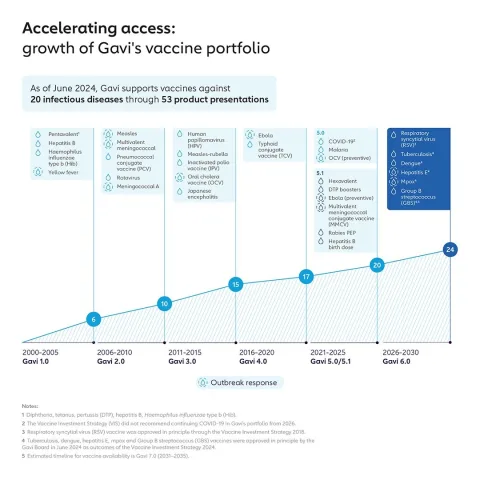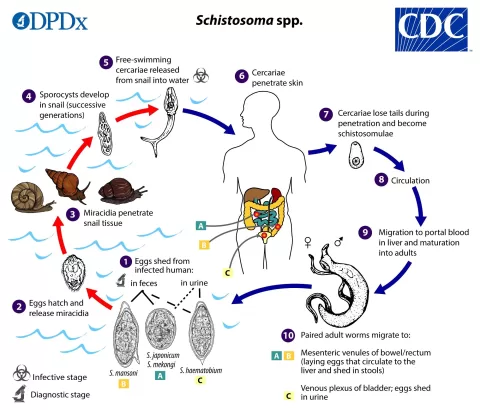The latest investigation into the DR Congo unexplained illness has raised urgent questions regarding the safety and health of communities in the Equateur province. Recent outbreaks have led to numerous fatalities, primarily among young males, igniting concerns over potential causes such as chemical poisoning and meningitis symptoms. As the World Health Organization (WHO) conducts a thorough investigation into this Democratic Republic of the Congo outbreak, experts are racing against time to uncover the connection between the cluster of cases reported in the region. This health crisis has prompted extensive surveillance and sample collection to isolate the pathogens responsible for this alarming phenomenon. Authorities are particularly focused on ruling out other diseases while closely examining environmental factors that may contribute to the deterioration of public health in DRC.
An ongoing health crisis in the Democratic Republic of Congo has spotlighted an alarming cluster of unexplained illness, particularly within the Equateur province. Officials and health experts are exploring various potential origins for this outbreak, including scenarios of bacterial infections like meningitis and possible instances of chemical poisoning in DRC. This grim situation has drawn attention to the symptoms associated with the illness, as the WHO continues its detailed investigations into the causes behind the sudden surge in mortality rates. As inquiries unfold in local villages, communities remain on high alert, hoping for clarity and safety in the face of such mysterious and disruptive afflictions. The collaborative efforts to pinpoint this public health threat illustrate the precarious nature of health conditions in the region.
Understanding DR Congo Unexplained Illness: Causes and Concerns
The ongoing probe into the unexplained illness in the Democratic Republic of the Congo (DRC) has shifted its focus toward potential causes, including chemical poisoning and bacterial meningitis. This shift comes in the wake of alarming reports from the WHO, indicating a disturbing spike in fatalities concentrated in Equateur Province. Initial concerns surrounding viral outbreaks such as Marburg or Ebola have been largely dismissed, which emphasizes the need for continued investigation into environmental factors or bacterial infections. The unique circumstances of the cluster—particularly its rapid onset and mortalities primarily among young men—raise significant health alerts and require a thorough examination of local health conditions.
Within this health crisis, symptoms reported have ranged dramatically, including high fever, chills, headaches, and gastrointestinal issues, all leading to symptoms mimicking other febrile illnesses. The rapid decline in patient health, often leading to death within a day, poses a challenge for health authorities attempting to classify the nature of these cases accurately. This complexity is further compounded by the presence of a history of chemical exposures in the DRC and the prevalence of diseases like malaria in the region, which complicates diagnosis and could easily eclipse the more urgent need to address potential chemical poisoning.
The Role of WHO in Investigating the Equateur Province Health Crisis
The World Health Organization (WHO) has been at the forefront of addressing the ongoing health crisis in Equateur Province, responding to an alarming cluster of unexplained illnesses that have led to numerous deaths. Their efforts underscore the complexities of dealing with outbreaks in regions characterized by inadequate healthcare infrastructure. The WHO’s systematic approach includes extensive surveillance activities that have identified over 1,318 suspected cases, illustrating the sheer scale of the issue. The challenge lies not only in identifying the definitive cause of illness but also in ensuring that accurate diagnoses are made amidst a backdrop of febrile diseases endemic to the area.
Furthermore, the WHO’s investigation is essential in guiding local health authorities as they navigate through potential links between chemical exposure and the symptoms observed in affected individuals. Conducting environmental assessments and testing for chemical pollutants—like organophosphates—are critical steps being taken to rule out chemical poisoning as a cause for the rising health crisis. As the WHO continues its investigation, the importance of precise data and effective communication has never been more apparent, as it is necessary for both immediate response and long-term health strategies in addressing the multifaceted health challenges facing the region.
The Emerging Meningitis Symptoms in the Democratic Republic of Congo Cluster
As the mysterious illness cluster in the Democratic Republic of Congo continues to unfold, symptoms indicative of bacterial meningitis are coming to light. This condition, marked by inflammation of the protective membranes covering the brain and spinal cord, aligns with some reports from affected individuals, particularly with participants exhibiting fever, headaches, and gastrointestinal distress. Meningitis poses serious health risks, especially in vulnerable populations, and its rapid onset can lead to devastating consequences, reinforcing the critical need for timely intervention by health organizations.
Reports of meningitis symptoms emerging from the Equateur province outbreak highlight an urgent need for a comprehensive public health response, including widespread education about early signs of meningitis. Health professionals must be prepared to recognize these symptoms swiftly to reduce mortality rates and prevent further spreading should this be the underlying cause of the unexplained illnesses. Accessibility to diagnostic tests and potential vaccines, as well as public awareness campaigns about the importance of seeking immediate medical attention when symptoms arise, must be prioritized to combat such outbreaks effectively.
Evidence of Chemical Poisoning: Pathway to Understanding the Outbreak
Initial findings associated with the unexplained illness cluster in Equateur Province indicate a potential link to chemical poisoning, raising serious public health concerns. The WHO has initiated investigations into environmental factors—particularly looking for signs of contamination from toxic chemicals like organophosphates. The relevance of these investigations cannot be overstated; understanding whether these chemicals are contributing to the rise in symptoms such as confusion, agitation, and respiratory difficulties is crucial for formulating an appropriate health response.
If traces of chemical poisoning are confirmed, it would not only explain some of the atypical symptoms but could also lead to broader implications for public health and safety in the region. Continuous monitoring and testing of both environmental samples and the health of local communities are necessary to establish a clearer cause of illness. Addressing potential chemical exposure related to agricultural practices, industrial activities, or environmental hazards will be essential in preventing future outbreaks and ensuring community well-being.
The Impact of Infrastructure on Health Responses in the DRC
Infrastructure challenges significantly impact the health response to outbreaks in the Democratic Republic of the Congo (DRC). The geographic barriers, such as dense forests and poor road networks, hamper the movement of healthcare professionals and supplies to remote areas like Equateur Province. As the WHO investigates the ongoing health crisis, these infrastructural limitations complicate efforts to deliver timely and effective medical attention, further stressing the need for innovative solutions to overcome access barriers.
Moreover, the lack of an established healthcare system to facilitate swift epidemic response efforts can lead to delayed investigations and mismanagement of health crises. Addressing the infrastructure issues in the DRC could result in enhanced surveillance capabilities and timely interventions, ultimately saving lives. It is crucial for local and international health agencies to collaborate not only in diagnosing and treating the current cluster but also in developing sustainable health systems that can withstand future health challenges.
Symptom Monitoring and Surveillance in the Outbreak Zone
Symptom monitoring and surveillance have emerged as key components in managing the unexplained illness cluster in the DRC’s Equateur Province. The WHO has reported that enhanced surveillance employing broad case definitions has led to the identification of a vast number of suspected cases. This proactive approach not only helps in recognizing patterns indicative of specific diseases but also assists in understanding the broader scope of health impacts within the community.
Effective symptom tracking can greatly improve public health responses, leading to targeted interventions that can prevent further spread of illness. However, it requires robust reporting systems and engaged local communities willing to report symptoms and seek care. Building trust within the community and providing education on the importance of reporting even mild symptoms can significantly influence the effectiveness of outbreak management and strengthen overall health resilience.
Community Health Education: Preventing Future Outbreaks
Community health education plays an integral role in preventing future outbreaks in the Democratic Republic of the Congo. As the investigation into the unexplained illness continues, educating residents about potential risks and symptoms of both chemical poisoning and diseases like meningitis is critical. Awareness campaigns can empower individuals to recognize early warning signs within themselves and their families, prompting prompt medical assistance where necessary.
Furthermore, strengthening community health education can also address misconceptions about health risks associated with various outbreaks. Providing information on hygiene practices, safe food preparation, and the importance of vaccination can create an informed populace better equipped to combat health challenges. In addition, involving community leaders and health workers in educational initiatives can foster an environment of collaboration that amplifies the message and encourages proactive health-seeking behaviors among community members.
Long-term Health Strategies for DR Congo’s Vulnerable Populations
In the wake of the recent unexplained illness cluster in Equateur Province, long-term health strategies must be prioritized to protect vulnerable populations within the Democratic Republic of the Congo. Efforts focused on enhancing health infrastructure, increasing access to healthcare, and improving disease surveillance will be essential to address the pressing health needs of affected communities. By investing in sustainable health systems, the DRC can work towards reducing the impact of future outbreaks and establishing resilience against emerging health threats.
Additionally, concerted efforts to build healthcare partnerships with global health organizations, like the WHO, will play a crucial role in mobilizing resources and expertise. These collaborations can foster a holistic approach to health through regular training for local healthcare providers, which can enhance diagnostic capabilities and treatment strategies. Ultimately, comprehensive planning and community engagement are vital to creating a healthy environment where the population can thrive free of the fear of sudden illness outbreaks.
Frequently Asked Questions
What are the symptoms associated with the unexplained illness cluster in DR Congo?
The unexplained illness cluster in the Democratic Republic of the Congo (DRC) features symptoms such as fever, chills, headaches, muscle pain, abdominal pain, diarrhea, sweating, dizziness, shortness of breath, and agitation. Victims often experienced rapid deterioration, with many deaths occurring within one or two days of the onset of these meningitis symptoms.
What is the current status of the Democratic Republic of the Congo outbreak?
The current outbreak in the Equateur province of the Democratic Republic of the Congo is under investigation. Two separate illness clusters have been identified, with suggestions pointing towards causes such as chemical poisoning or bacterial meningitis. The World Health Organization (WHO) is actively conducting epidemiological investigations to determine the exact cause of the outbreak.
Is there a link between the Equateur province health crisis and chemical poisoning?
Yes, the WHO investigation into the Equateur province health crisis is considering chemical poisoning as a potential cause of the unexplained illness. Samples have been collected to test for environmental contaminants, particularly organophosphate compounds, that could lead to the observed symptoms and rapid fatalities in the affected areas.
How is the WHO addressing the meningitis symptoms in the DR Congo outbreak?
The WHO is enhancing surveillance efforts to characterize the suspected cases related to meningitis symptoms during the ongoing outbreak in the Democratic Republic of the Congo. Their investigations include comprehensive testing of individuals exhibiting these symptoms to rule out other febrile illnesses like malaria.
What factors are contributing to the spread of the illness in DR Congo’s Equateur province?
Factors contributing to the spread of the unexplained illness in the Equateur province include inadequate infrastructure, dense forests separating communities, and potential environmental contamination. Additionally, the rapid onset of meningitis symptoms in younger individuals may suggest a specific vulnerability among populations exposed to certain risk factors.
What is known about the deaths reported in the Democratic Republic of the Congo outbreak?
In the Democratic Republic of the Congo outbreak, 53 unexplained deaths have been reported, primarily from one village within the Basankusu Health Zone. Most fatalities occurred within one day of illness onset, indicating a severe and possibly acute condition related to the unexplained illnesses under investigation.
What actions are being taken to investigate the unexplained illness in DR Congo?
Investigations into the unexplained illness in the Democratic Republic of the Congo are ongoing, with the WHO collecting cerebrospinal fluid and environmental samples. The aim is to identify the specific causes of the illness, whether it be chemical exposure or bacterial infections, while clarifying the wide range of symptoms reported.
Are there any potential connections between the illness clusters in Bolomba and Basankusu of DR Congo?
Currently, the WHO has indicated there is no direct connection between the illness clusters in Bolomba and Basankusu, as they are geographically separated by dense forests. The ongoing investigations are focused on understanding the individual circumstances surrounding each outbreak.
| Key Points |
|---|
| Investigation into the unexplained illness cluster in DR Congo explores possible causes including chemical exposure and bacterial meningitis. |
| Two clusters noted in Equateur Province, one smaller in Bolomba and a larger in Basankusu with 24 known deaths. |
| Initial tests ruled out Marburg and Ebola; symptoms include fever, chills, and rapid decline to death within days. |
| Majority of deaths reported from a single village, mainly affecting young men. |
| 1,318 suspected cases reported, with complications in interpreting data due to diverse febrile illnesses. |
| Rapid testing indicated unusual levels of malaria positivity; further testing continues to determine the cause. |
Summary
The ongoing investigation into the DR Congo unexplained illness highlights the urgent need for clarity regarding possible causal factors such as chemical poisoning and bacterial meningitis. As health authorities delve deeper, they continue to monitor and analyze the symptoms and incidence of the illness, ensuring that more targeted responses can be developed to prevent further loss of life.
The content provided on this blog (e.g., symptom descriptions, health tips, or general advice) is for informational purposes only and is not a substitute for professional medical advice, diagnosis, or treatment. Always seek the guidance of your physician or other qualified healthcare provider with any questions you may have regarding a medical condition. Never disregard professional medical advice or delay seeking it because of something you have read on this website. If you believe you may have a medical emergency, call your doctor or emergency services immediately. Reliance on any information provided by this blog is solely at your own risk.








